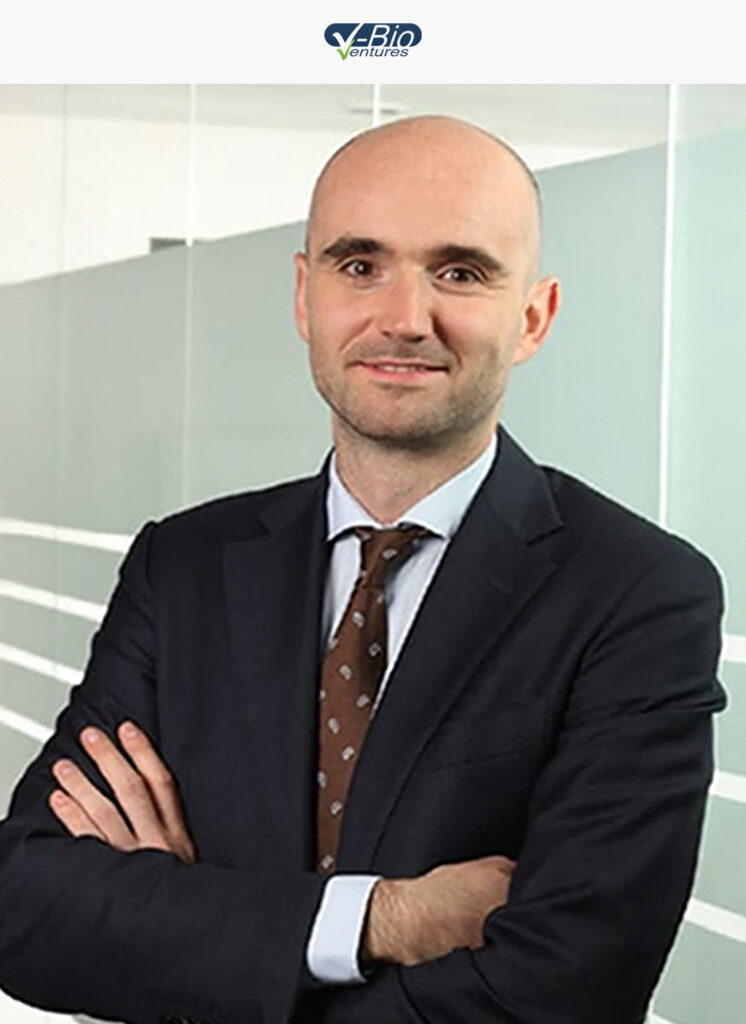

Ward Capoen studied biology and subsequently obtained a PhD in biotechnology at Ghent University. He worked as a postdoctoral fellow at the John Innes Centre in the UK, to continue his career as a researcher at the prestigious Harvard University in Boston. He became more interested in the commercial side of biotechnology and decided to specialize in Business Administration with an MBA at Vlerick. This was a stepping-stone for his current career at Candriam as a Biotechnology Analyst.
Capoen took his first professional steps as a biotech analyst at Candriam Investors Group (the former Dexia Asset Management). Candriam manages over $100 billion in assets and among them a fund of $900 million that invests in public biotech companies. Ward helped to choose which assets to buy so that the fund could grow. He stayed informed on all of the latest developments by going to conferences, reading papers, following news updates and watching the developments on Wall Street.
Today, Ward uses his skills and experience at V-Bio Ventures, an early stage life science investment fund focused on investing and supporting small biotech start-ups.
Science behind the money
Although I work in finance, about 90% of my time is still occupied with science.
“As I am not specialized in one specific subject, I spoke with a whole range of companies on their latest innovations during my time at Candriam. This ranged from the pathology behind Alzheimer’s, to cardiac stem cells and eye diseases”, says Capoen. He also analysed the technical side of assets. “I’m looking for benchmarks on how to judge clinical data. These are different for every disease. For example, if the overall survival rate of people with a certain type of cancer is between 10 to 20% on current therapies, then, if the survival rate from a clinical trial is 40%, this is a good result and possibly worth the investment,” continues Ward. These benchmarks can, next to efficacy, be safety. For example, it’s interesting to know if a drug has 50% less side effects compared to another drug with comparable efficacy.
Is Europe running behind the USA?
The number one geographical player in the biotech sector remains the United States. “Funding and financing in the US is much better and bigger than ours. The sector is also more mature there. The first biotech companies in the US dates back to the 80s’. They have a larger pool of investors, scientists and experienced managers, but in Europe this is coming too,” says Ward, “within Europe, France has currently the most eye-catching biotech, but Belgium is not far behind. Companies such as Galapagos (Mechelen) and Ablynx (Ghent), both have very promising data.”
For once, we should not (yet) be afraid of China
“We keep an eye on China, but not much is happening there yet. Japan, in contrast, has a rich pharmaceutical tradition. It is the third largest market and should not be underestimated,” Ward states, “a lot of good molecules were discovered in Japan and marketed by Western companies.”
To NASDAQ or not to NASDAQ
“In the US there is more visibility and liquidity. The disadvantage of going to NASDAQ is that you have to do all the reporting according to US accounting rules and regulations. You need double accounting, one for the States and one for Europe. Being listed on NASDAQ is not always an advantage. A unpromising company will not suddenly outperform because it is listed in America,” argues Ward, “if you plan to set-up labs and operations in the US, then it can be an advantage to have a dual listing.”
Strong innovation and big prices are the fundaments of biotech
Capoen explains: “Of the total health care spending, only about 10 % is the cost for medication. The rest are medical and nursing costs. However, we now start to feel the pressure from the insurance company to get the price down, as certain classes of drugs are very expensive. For example, Gilead has a new drug on the market for Hepatitis C. There are millions of people with Hepatitis C and Gilead asked $ 85,000 per patient. So within one year, the reimbursement costs rose enormously. This drove the insurance company up the wall.” It is well-known that price competition can occur when different companies develop similar drugs. In contrast, when medication is developed for orphan diseases, there is very little competition and therefore no means for price negotiation. “Yes, but as the number of patients with an orphan disease is so low, the cost is reasonable in comparison to the total budget for health insurance.”
The more innovative and differentiated the drug is, the less
price pressure. The more pressure on pricing, the more pressure to innovate.
Biotech is less correlated to the broader market
The biotech sector is not as highly correlated with the overall market because it is less dependent on the macro economy. Ward Capoen confirmed: “Healthcare is a defensive sector because, unfortunately, it’s human nature to become sick sometimes. It is not the case that in times of financial crisis you sell less cancer drugs. Therefore, the biotech sector is less sensitive to economic conditions.” A biotech company does not borrow money from a bank because of its risk profile. Biotech companies focus on private equity. This has the advantage that biotech companies are less sensitive to interest rates. The biotech sector is now more stable and mature than a decade ago. “There are already dozens of companies that make a profit now. Fifteen years ago there were only a few,” concludes Ward, “the profitability of the biotech sector is growing faster than the overall market.”
